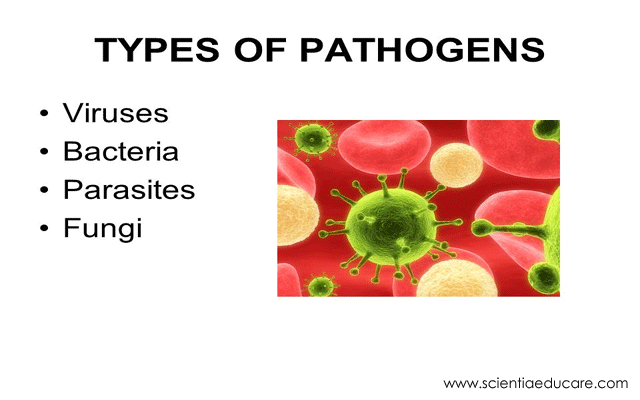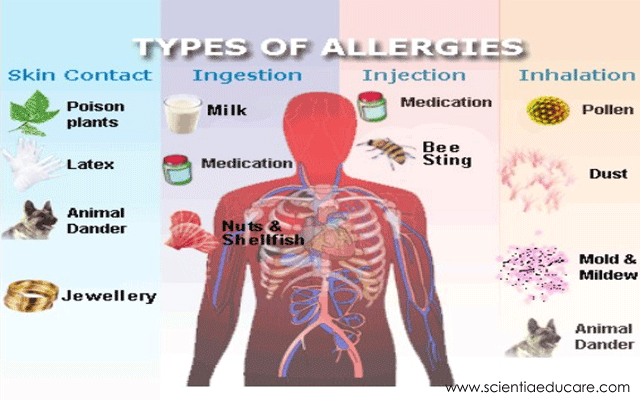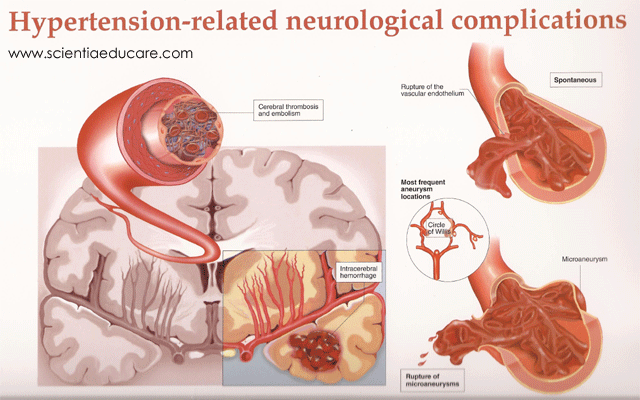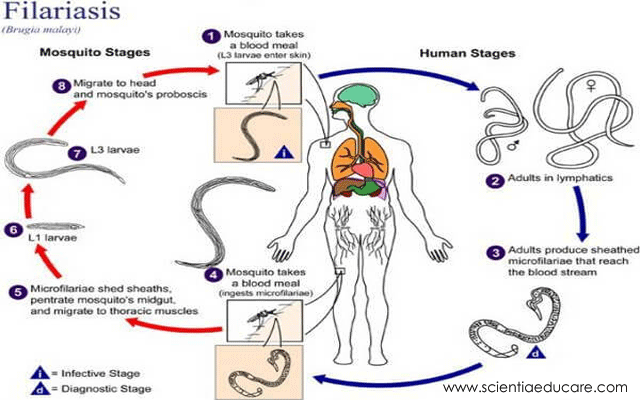Pathogen
We normally think of pathogens in hostile terms—as invaders that attack our bodies. But a pathogen or a parasite, like any other organism, is simply trying to live and procreate. Living at the expense of a host organism is a very attractive strategy, and it is possible that every living organism on earth is subject to some type of infection or parasitism (Figure 25-1). A human host is a nutrient-rich, warm, and moist environment, which remains at a uniform temperature and constantly renews itself. It is not surprising that many microorganisms have evolved the ability to survive and reproduce in this desirable niche. In this section, we discuss some of the common features that microorganisms must have in order to be infectious. We then explore the wide variety of organisms that are known to cause disease in humans.
TYPES OF PATHOGENS
Mastitis – Causing Pathogens
In the UK the main bacterial species that cause mastitis in dairy cattle are Streptococcus uberis, Staphylococcus aureus, and Escherichia coli (E. coli), although more than 200 organisms have been identified as mastitis-causing pathogens.
Streptococcus uberis
Streptococcus uberis is by and large a pathogen which causes environmental mastitis. It is found in much of the cow’s environment and is particularly prevalent in straw bedding and straw yards. In contrast, sand-based bedding systems have been found to be an unsupportive environment for the bacterium.
Mastitis caused by the bacterium is very acute, with a sudden onset, but is normally particularly responsive to a range of antibiotics used for the treatment of mastitis. Many S. uberis infections can occur during the dry period, and only become apparent as clinical symptoms during the lactation, stressing the importance of good dry cow management.
Although generally designated as an environmental pathogen, some strains of the bacterium have been shown to possess characteristics of the contagious forms of the disease, where they may be responsible for chronic mastitic cases in particular, and the bacterium can be found in significant numbers on the cow herself while not being present in the faeces, (unlike E. Coli).
Staphylococcus aureus
Staphylococcus aureus is notoriously difficult to treat with antibiotics, as it has an ability to become trapped in fibrous tissues and within cell structures; areas that antibiotics cannot reach with great effectiveness. Its particular characteristic in chronic cases is the formation of fibrous lumps on the udder where the infection has effectively become untreatable and will result in recurrent bouts of mastitis.
The bacterium is a contagious mastitis pathogen, and has a good ability to adhere to teat and udder skin where it can colonise into the teat canal. Hence, post-milking teat disinfection is an important means of controlling the bacterium and dry cow therapy has an important role in controlling levels of infection and the spread of the disease.
Because these two methods have become so crucial in controlling the bacterium, and are both widely-used, the proportion of mastitis caused by S. aureus has dropped significantly in the past few decades. In some extreme cases, the bacterium can cause a very unpleasant acute gangrenous mastitis.
Escherichia coli
E. coli is an environmental pathogen that is present in significant numbers in the general farm environment due to being present in large numbers in faeces. It can become responsible for some very acute, painful and potentially fatal forms of mastitis and is the biggest environmental cause of mastitis on dairy farms. Cows with acute infections often secret a thin, watery discharge instead of healthy milk.
In recent decades due to the changes in practices on dairy farms involving a number of factors including more intensively-house cattle with higher average yields, the proportion of mastitis cases caused by E. coli has increased significantly. Poorly-designed housing and bad bedding management can exacerbate the situation where poor ventilation increases humidity levels. The bacterium infects the teat canal when infected milk is forced into the teat canal during milking if liner slippage occurs or the milking plant is unable to momentarily cope with large amounts of milk, the clawpiece fills with milk and the teat end is bathed in potentially-infected milk residues.
The bacterium produces very strong toxins, which can quickly cause severe symptoms, in some cases fatal, particularly as some cows, for reasons not yet fully understood, fail to mount an effective immune response to the disease.
Vaccines are available, but their use is heavily compromised by the fact that several strains of the bacterium may be present. Infection can occur during the dry period with symptoms not apparent until the lactation begins: an increase in stress levels or suppression to the immune system can be a trigger.
Streptococcus agalactiae: a very contagious mastitis pathogen but one that responds well to antibiotic treatment and can be controlled with good attention to hygiene.
Streptococcus dysgalactiae: a common cause of mastitis in heifers and dry cows and implicated in cases of Summer Mastitis.
Corynebacterium bovis: often blamed for causing raised Somatic Cell Counts and causing subclinical disease.
Mycoplasma: a highly contagious pathogen that responds poorly to antibiotics and causes a yield drop often with few other symptoms.
Other Staphylococci species, which may be responsible for cases of subclinical mastitis.
Other organisms have also been identified as causing environmental mastitis:
Other coliformbacteria:
Klebsiella pneumonia: often to be found in damp, stored sawdust used for cubicle bedding, causing severe, toxic mastitis.
Citrobactor.
Enterobacter.
Pseudomonas aeruginosa: typically found in contaminated water supplies causing a variety of mastitis symptoms; it is difficult to treat due to a poor antibiotic response.














